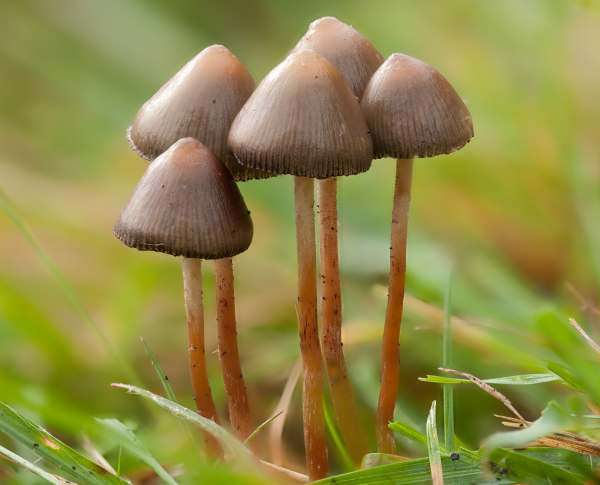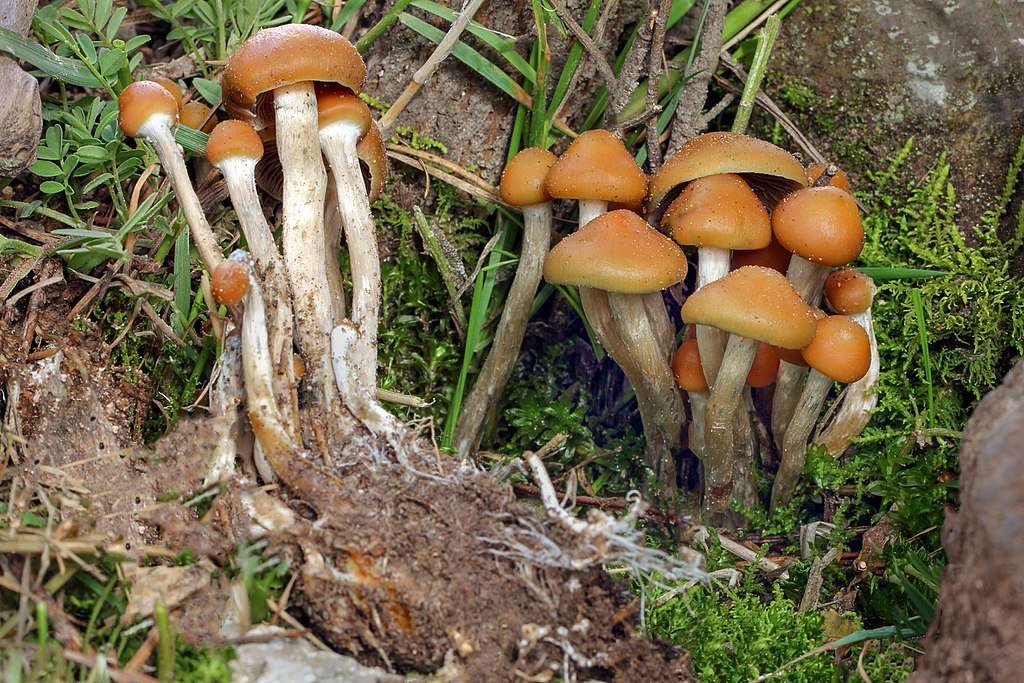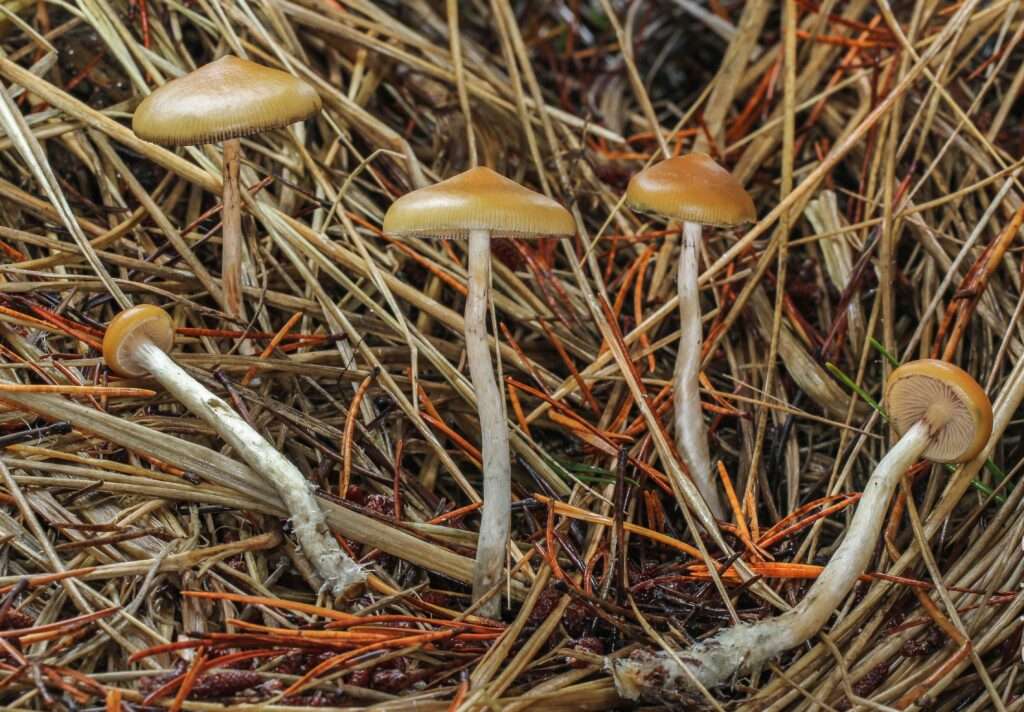
Scientific name
Mycena chlorophos
Description
Green Pepe mushrooms are very attractive, unique, and bioluminescent. Their cap has a diameter of 30 mm and is initially convex that turns flat. The cap features radial grooves that almost reach its center and occasionally develop fractures along its toothed, rounded border. It has a little sticky texture and a light brownish-grey tint that disappears during expansion. Their white-colored stem is transparent, hollow, and 6- 30 mm in length by 0.4-1 mm in width. Its surface is covered with microscopic hairs. The stem’s base is disc-shaped or slightly bulbous, and it is 1–2.5 mm in diameter. On stems 6- 30 mm long and up to a millimeter thick. The fruit body has pale brown-grey sticky crowns that measure about 30 mm in diameter. These are bioluminescent mushrooms that give out a soft green glow.
The tiny gills are not attached to the stem and are adnexed. They consist of 17–32 full-length gills and one to three tiers of lamellulae. They are initially white before becoming grey in hue. They are also quite crowded. The margins of the 0.4–1 mm-wide gills are micaceous. The flesh is paper-thin and strongly reeks of ammonia. The stem and mycelia show very little to no light; however, the gills and caps are both bioluminescent. Their spores are 7-8.5 by 5-6 m in size, white in color, smooth in texture, and elliptical in shape.

Habitat
Green Pepe mushrooms are native to India, Indonesia, and the subtropical region of Asia, Japan, Srilanka, Taiwan, and Australia. They are mostly found growing on dead woody debris, branches, wood logs, and fallen leaves. They can also be grown in laboratories for the investigation of bioluminescence.
Uses/Importance
Green Pepe mushrooms produce green glowing light that makes sense that insects drawn to the bioluminescent mushroom would scurry all over the mushrooms and end up coated in spores that would then spread to other areas of the ecosystem. Perhaps fungus in these mushrooms was developed alongside animal hunting or reproductive strategies to increase animal reproductive success.
It has been demonstrated that Green Pepe mushrooms-inspired auto luminescent triboelectric fibers can function as wearable power sources, self-powered detectors, and human-device interfaces by converting biomechanical energy into usable electricity and simultaneously emitting persistent visible light.
Table





